Château Lafon-Rochet
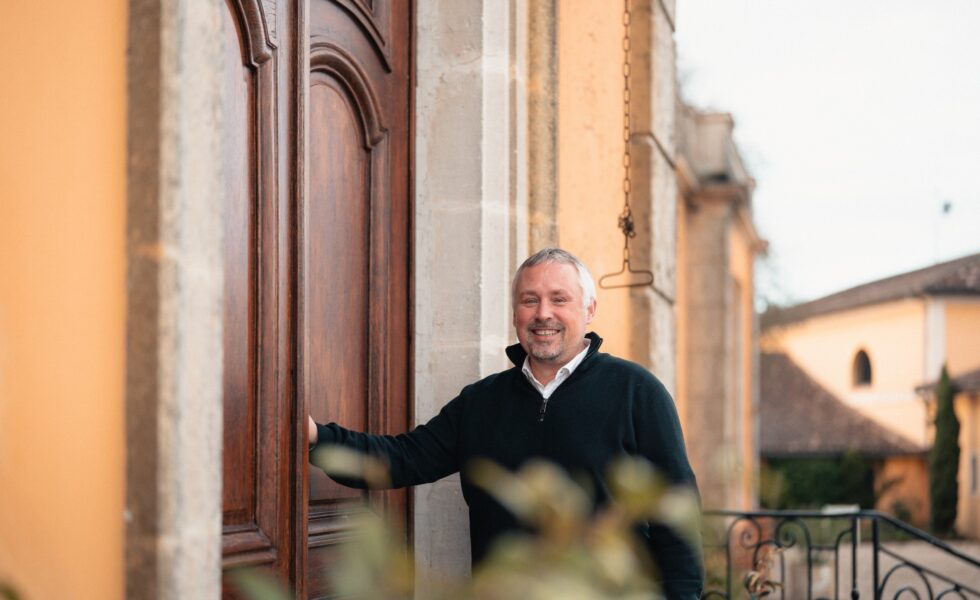
A New Chapter of Freshness and Finesse
By Panos Kakaviatos for Wine Chronicles
30 October 2025
When Vincent Bache-Gabrielsen (photo above, credit to Château Lafon Rochet) took charge of Château Lafon-Rochet last year, it marked a quiet but meaningful shift for this celebrated classified growth in the Bordeaux appellation of Saint-Estèphe. Having worked within the Lorenzetti family group since 2008 and previously leading Château Pédesclaux in Pauillac, Bache-Gabrielsen essentially swapped posts with Christophe Congé to bring his precision-minded approach to this storied Fourth Growth. His arrival builds on the steady progress made under Basile Tesseron, whose tenure already lifted Lafon-Rochet’s quality to new heights.
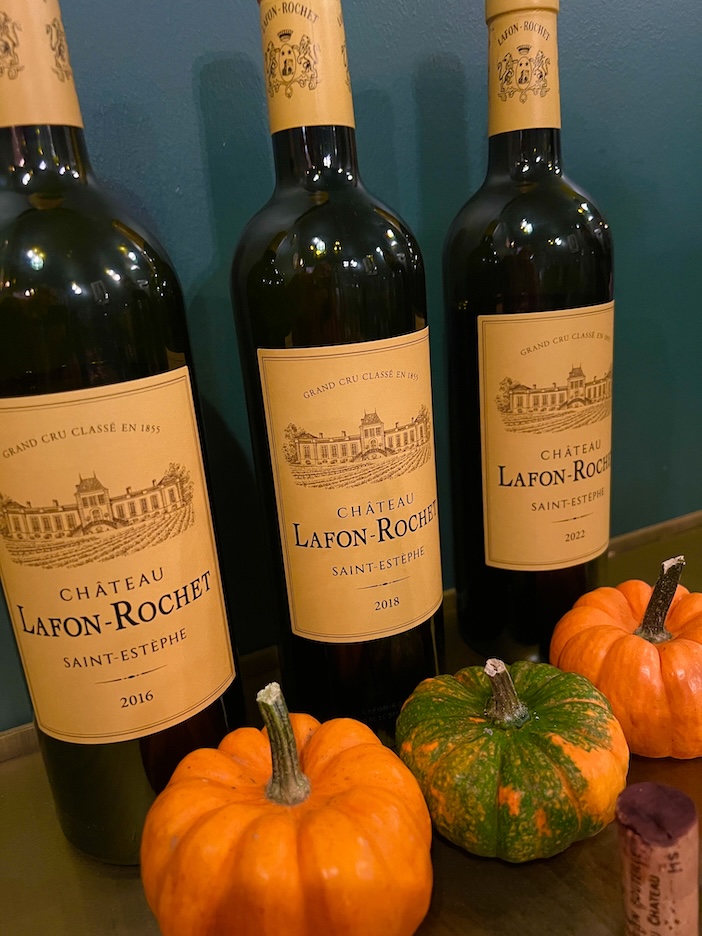
The estate’s core identity remains anchored in its history. Its 1842 vineyard layout is largely intact, although the Tesserons — who took over in the 1960s — expanded the property with several parcels acquired from Château Lafite Rothschild to the west. The Tesseron era also gave Lafon-Rochet its distinctive Tuscan-yellow façade, completed in 2000: a visual statement of renewal and ambition. And it is an appropriate color for Halloween. 🎃👻🦇
Bache-Gabrielsen’s guiding principle can be summed up in two words: puissance and fraicheur — power and lift held in balance. To achieve this, he is fine-tuning viticulture and winemaking. Oak influence is being pared back, from 40 percent new barrels in 2024 to just 15 percent in 2025, while the use of large foudres (large oak vats) will triple to 30 percent. A small proportion of concrete vats — around 10 percent of the élevage — now complements barrel aging, helping to preserve purity of fruit and vibrant energy. The goal is a reach more restrained, terroir-driven expression, with alcohol levels dialed back toward 13 percent and greater emphasis on Cabernet Sauvignon grown on the estate’s cooler gravel and clay soils, while Merlot increasingly occupies fresher plots.
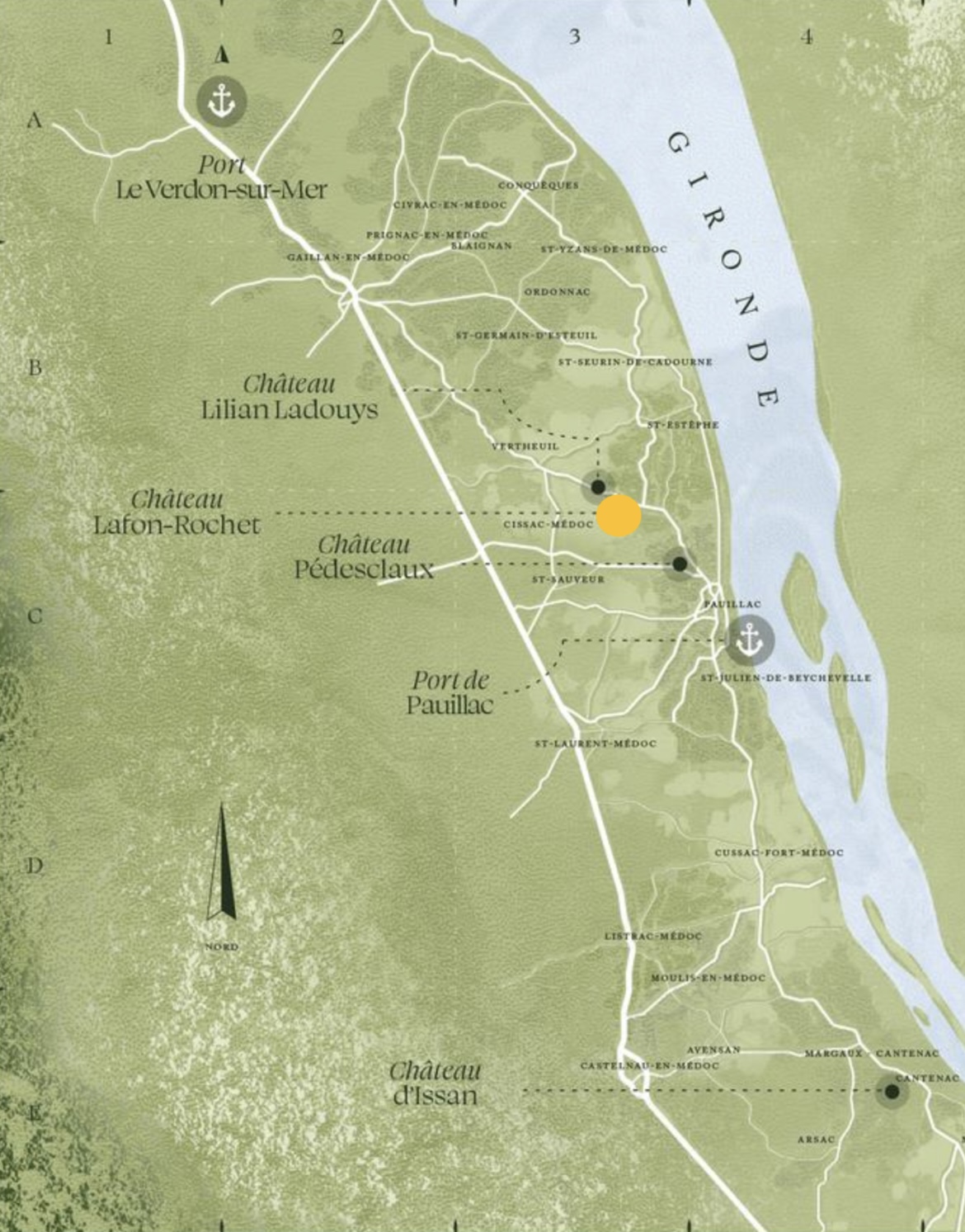
The Boissenot consultancy, a historic partner of the château, returned in 2021 under Éric Boissenot, following the departure of Jean-Claude Berrouet, who had done excellent work for the estate. Together with Bache-Gabrielsen, they are steering Lafon-Rochet toward even finer tannins, more measured extraction, and greater precision. Amphora trials have been set aside in favor of the more reliable and expressive foudres (larger oak casks). The result is a series of wines that combine structure with grace: the 2016 (the first vintage from the new cellars) shows nuance if a touch of youthful austerity; 2018 and 2022 display polish and early charm; and 2023, the first full vintage under Bache-Gabrielsen’s vision, reveals even greater balance and finesse. I feel that the high alcohol in both the 2018 and 2022 vintages can be felt, although not as readily in the 2022, while the 2016 and 2023 vintages seem more balanced. The 2018 and 2022 vintages, which reflect hotter and drier years associated with climate change, may well become more common, thus making the aforementioned goals all the more important.
Tasting notes: 2022, 2018 and 2016
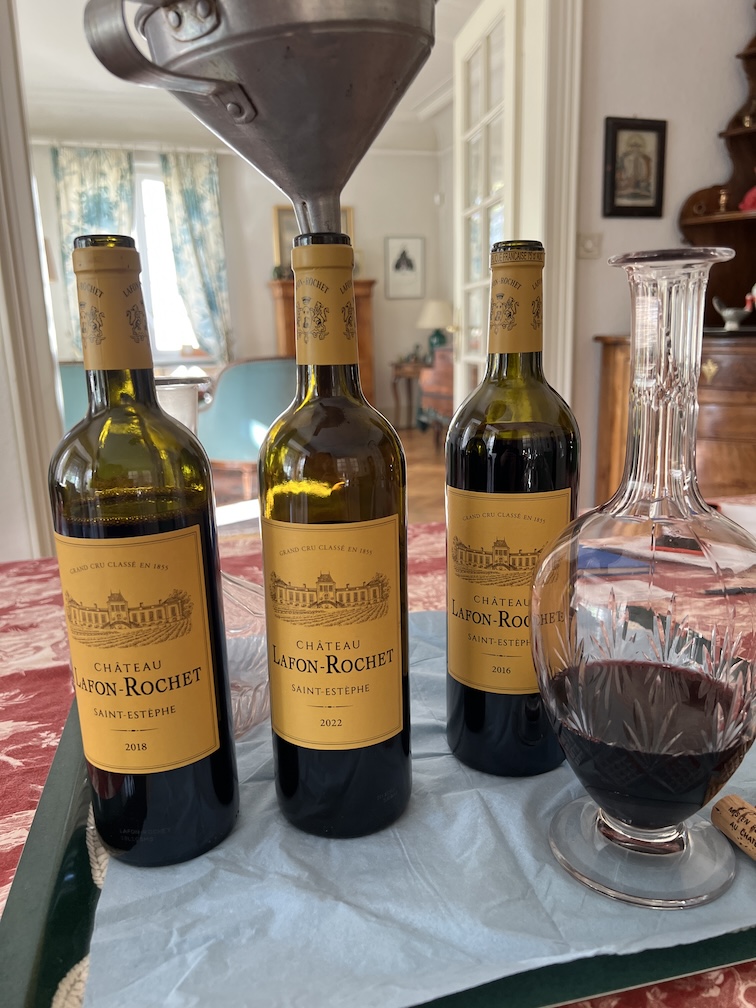
Double decanting for aeration
Initially, I tasted with Bache-Gabrielsen, who was online while I double decanted the wines. I later tasted the wines again that evening with experienced sommelier Ilona Garnier of the popular Strasbourg bistro Pompette. The 2016, the first vintage with new cellars, exudes a palate of freshness and bright fruit, chiseled and smooth tannins, leading to a long finish. This blend of 67% Cabernet Sauvignon, 25% Merlot, 6% Cabernet Franc and 2% Petit Verdot has the lowest pH of the three vintages assessed, at 3.55 (higher acidity), and the lowest alcohol, at 14%. The harvest stretched from 29 September to 20 October.
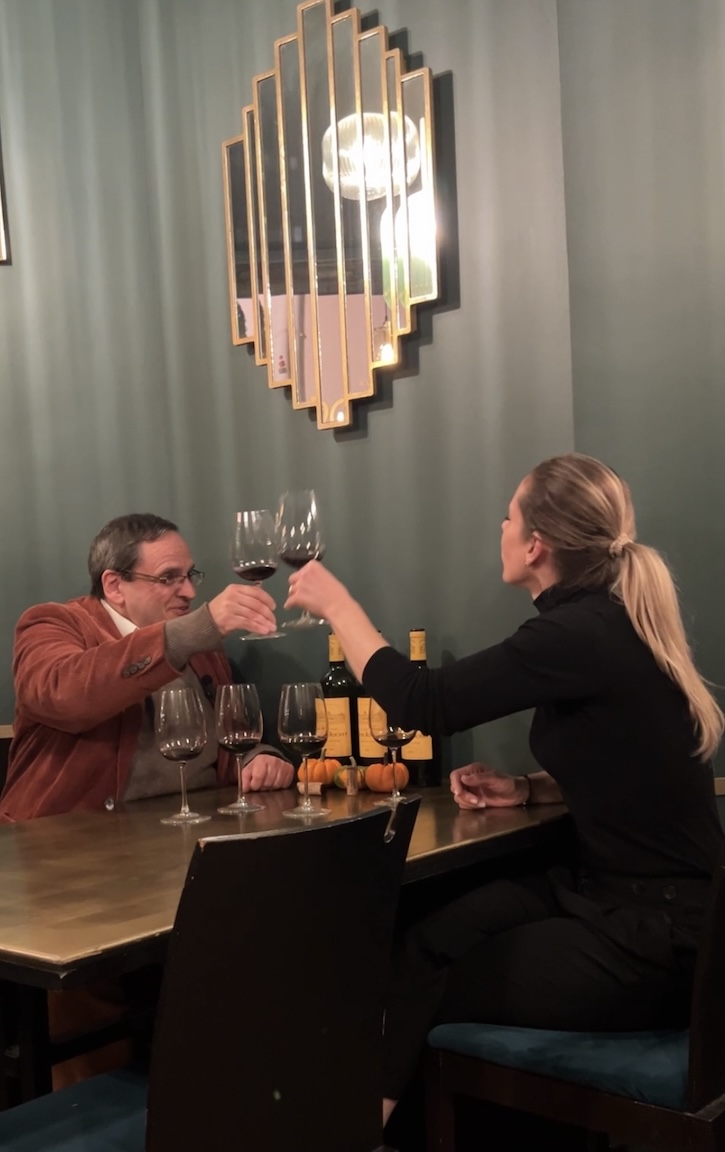
Tasting at Pompette with Ilona Garnier
The 2018, at least at this stage in time, proved the weakest. Garnier and I agreed that it came across somewhat heavy handed, reflecting the dry heat of 2018: a style of vintage that will perform better with less new oak, as planned for the future. A slightly earlier harvest – September 24th to October 13th – reflected hotter, dryer weather compared to the 2016. The blend of 64% Cabernet Sauvignon 26% Merlot 6% Petit Verdot and 4% Cabernet Franc has a higher pH at 3.75 and clocks in at 14.5% alcohol.
The 2022 seemed the most exciting of the three, at least the attack, already looking bright violent, the wine exhibits youthful fresh notes, bursting with black berry and plum fruit. But both Garnier and I still preferred the 2016 overall for more evident freshness and balance, exhibiting the less extreme nature of the year as opposed to all the dry heat of 2018 and 2022. Of course being in bottle about nine years gives 2016 some complexity lacking in the more recent vintages. Still, the 2022 outshines the 2018, as it benefited from softer extractions and more precise winemaking. Certainly reflecting the heat of the vintage, the harvest was done much earlier than in 2016, from 12 to 27 September. The blend of 65% Cabernet Sauvignon, 31% Merlot and 4% Cabernet Franc has a pH of 3.77 and clocks in at 14.5% alcohol.
Lafon-Rochet, long admired for its reliability, is entering a new era defined by clarity, freshness, and classic Saint-Estèphe poise — a rebirth grounded in precision rather than power. Readers should take note that the wines here constitute bargains: while a highly rated wines, prices remain modest: between $50 to $60 retail per bottle.
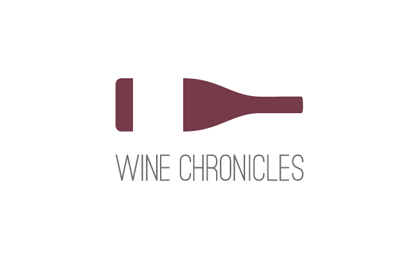 Wine Chronicles
Wine Chronicles
Share This